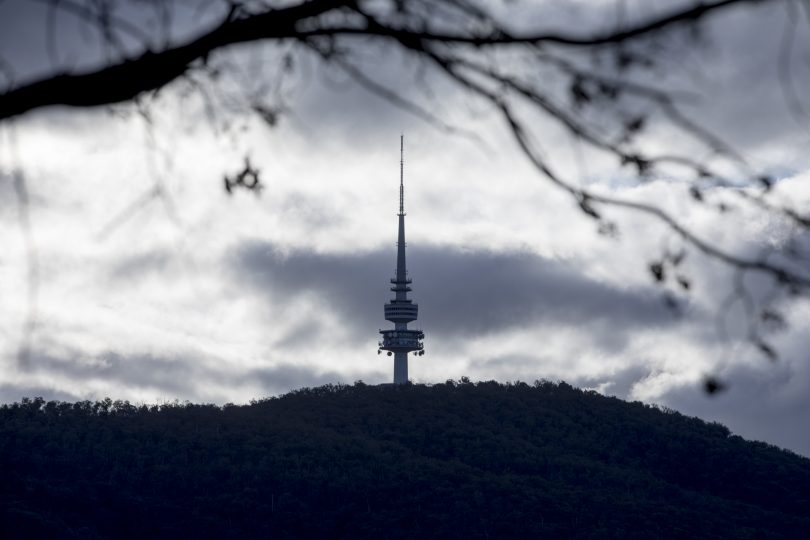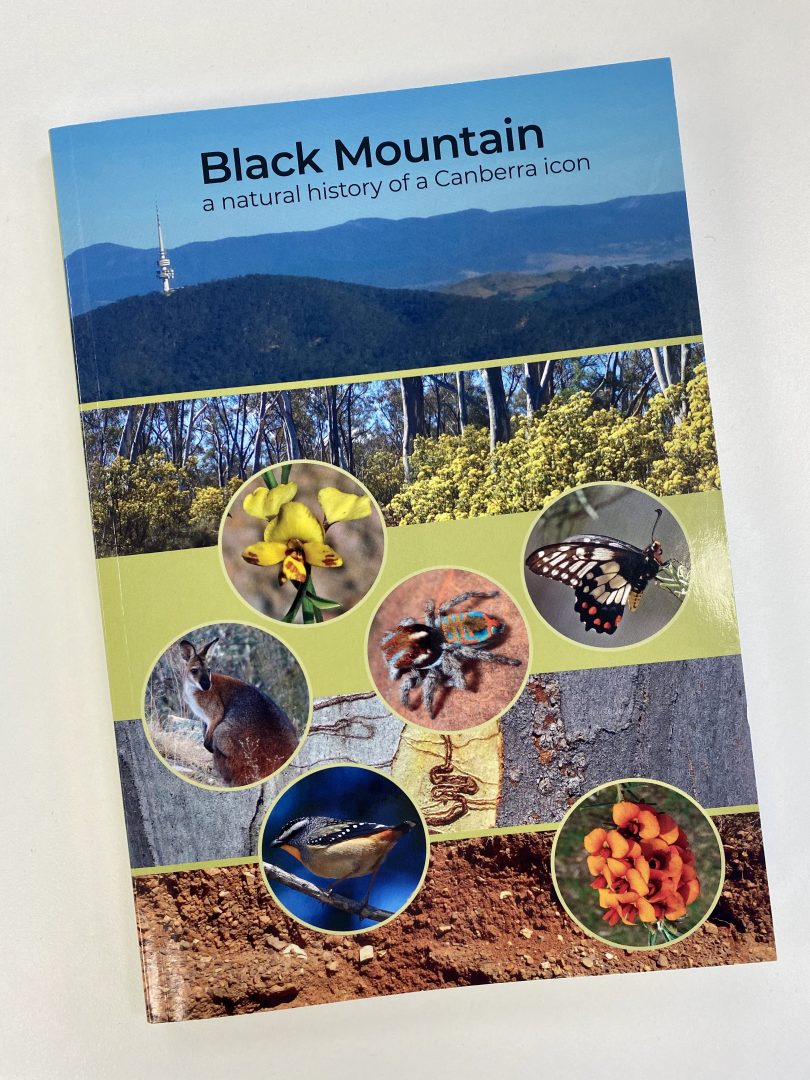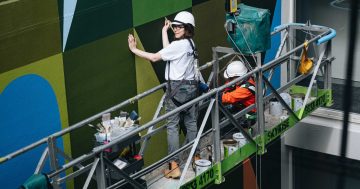
Telstra Tower – the Canberra icon that almost wasn’t. Photos: Michelle Kroll.
“It’s the place that you can see from just about anywhere in Canberra”, says Ian Fraser about Black Mountain.
“We have, within a metaphorical stone’s throw of the centre of Canberra and the parliamentary triangle, a largely original block of native forest. It’s never been completely cleared although parts have been logged and burned, but essentially the forest is the same as it was before European settlement.”
Ian Fraser lived at the foot of Black Mountain for 27 of his years in Canberra. The renowned local naturalist (and regular RiotACT columnist) has co-authored Black Mountain: a natural history of a Canberra Icon with plant ecologist Dr Rosemary Purdie.
Black Mountain has been a conservation reserve since 1970 and was the first part of the Canberra Nature Park to be declared. That 50-year anniversary is the trigger for this book about the area’s natural history but there’s fascinating social history behind the story too, especially Telstra Tower, one of our most familiar landmarks.
“So many people feel and have connections with the mountain that precede the tower,” Ian says. “Telstra Tower was an intrusion that was being planned when I first arrived in Canberra over 40 years ago.
“It sparked enormous passion and reaction from people at a time before mass environmental protests were widespread. There was everything from protests on the ground to challenges in the High Court. It actually took a retrospective change of legislation to erect the tower.”

The Friends of Black Mountain have commissioned a book about the wilderness.
The book is a lively, usable documentation of the 640 plant species and thousands of insects and other animals that live on Black Mountain. It’s rich with photographs and describes everything from rare plants to feral animals – a living, breathing compilation of all the mountain’s moods.
There is change, certainly, in addition to weeds there are introduced natives like the Cootamundra wattle (acacia balileyana) and acacia decurrens. A total of 110 species recorded on the mountain between 1935 and 1980 have not been recorded since despite intense searching by Rosemary Purdie.
But while human interaction will always change a wild place, the book is also the story of the humans who have observed, nurtured and advocated for Black Mountain. The ANU and CSIRO are both located at the mountain’s base and Ian Fraser says that’s had a major impact
“The book is an attempt to share an extraordinary amount of information about Black Mountain,” he says. “Because CSIRO and ANU are over the back fence, this would be one of the most intensely studied pieces of natural environment in Australia.
“There’s a huge amount of information about it, a literal mountain of knowledge about the mountain.”
Partly that’s due to the many citizen scientists who are acknowledged in the book, which includes an honour roll of plant collectors who have contributed 100 specimens or more to the Black Mountain herbarium and a list of plants used by Ngunnawal people
Forty-five bird, mammal and reptile species live on the mountain and CSIRO entomology staff have for decades “hopped over the fence” to collect specimens. But there are literally thousands of unclassified invertebrates awaiting full classification and at least 184 people have contributed specimens over the years.
The study goes on, formally and informally: there’s a chapter about the many walks around the mountain and the paths that criss-cross the slopes, discussions about fire management, and the changes and challenges that face the bush as the city continues to grow.
“I think my own personal philosophy is that it’s not my job to tell people what to think but to give them an education that helps them understand the natural world better,” Ian says, “so there’s a sense of stewardship and care for the natural world. If there’s a hidden agenda, that’s it!”
Black Mountain: a natural history of a Canberra icon is available by emailing [email protected] or call 0404 148 721.
Original Article published by Genevieve Jacobs on The RiotACT.


